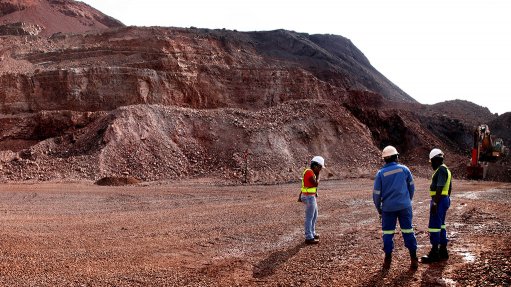
CLOSED DOWN Thabazimbi iron-ore mine had to be closed down in July as a consequence of the tough conditions in the global iron-ore industry
With the outlook for iron-ore quite bearish, “some punters are even talking about the unthinkable” – a price below $40/t, after the commodity’s price dropped below $50/t in October, says machine vision solutions company Stone Three Mining Solutions CEO Louis Marais.
“Things are tough and the reality of this for South African mines is simple – become cost efficient or go out of business.”
An early casualty of this reality is the closure in July of diversified major Anglo American’s subsidiary Kumba Iron Ore’s Thabazimbi mine, in Limpopo, says Marais.
The simplest, but perhaps improbable solution, given the existence of open market policies in South Africa, he notes, is to have some form of price regulation to preserve much-needed jobs.
“However, while this could be applied in South Africa, it certainly would be extremely difficult to apply internationally. Moreover, it would fly in the face of the Competition Commission’s purpose of preventing restrictive business practices and the abuse of dominant positions and mergers to achieve equity and efficiency in the South African economy.”
Stone Three Mining Solutions process engineer and control expert Robbie Brown explains that process optimisation is essential. “This means having the right people in management, having the right plant and equipment in place and a highly efficient, modernised operation.”
Marais says process optimisation essentially means mechanisation and automation.
He adds that ore mining company Assmang’s Khumani iron-ore mine is an example of a mine that has invested con- siderably in technology, giving the operation a significant advantage in a difficult economic environment.
However, the arguments for and against mechanisation and auto- mation puts mine owners at loggerheads with trade unions.
“The positives, given South Africa’s position as a developing nation, are that it will upskill people and increase productivity. On the downside, as the trade unions will argue, is that it will mean job losses,” comments Marais.
He adds that, even so, upskilling workers will not be a simple process as operating high-technology equipment and systems requires an integrated skill set, and moving people into information and communications technology requires the necessary vision from management, effective planning and political will.
“Nonetheless, if South African iron-ore mines are to survive on the international market, they will have to mechanise and automate. This is the harsh reality.”
Brown adds that metallurgists need to understand their mineral extraction processes by measuring influential variables – smart technology can empower them to conduct this discovery process, which enables the improvement of operational efficiency.
However, putting in place the right integrated solution for a given mine requires a combination of skill sets, knowledge and experience, highlights Marais.
“Technology and consulting companies in the mining industry have a critical role to play in working closely with their clients to find workable, long-term solutions necessary for the survival of iron-ore mines in today’s hugely challenging market,” he concludes.